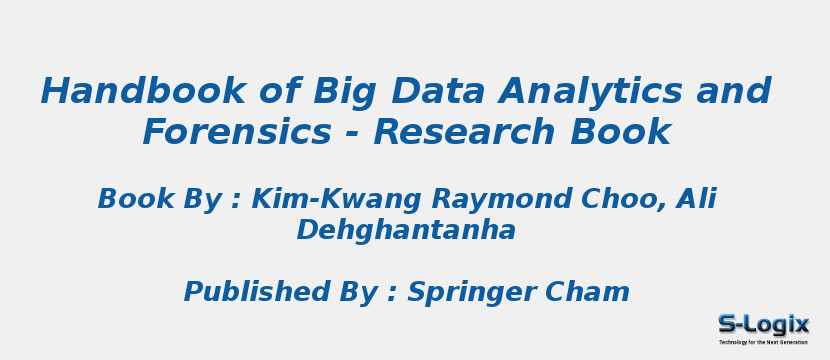Author(s) Name: Kim-Kwang Raymond Choo, Ali Dehghantanha
This handbook discusses challenges and limitations in existing solutions, and presents state-of-the-art advances from both academia and industry, in big data analytics and digital forensics. The second chapter comprehensively reviews IoT security, privacy, and forensics literature, focusing on IoT and unmanned aerial vehicles (UAVs). The authors propose a deep learning-based approach to process cloud-s log data and mitigate enumeration attacks in the third chapter. The fourth chapter proposes a robust fuzzy learning model to protect IT-based infrastructure against advanced persistent threat (APT) campaigns.
The authors evaluate the performance of unsupervised machine learning for detecting cyberattacks against industrial control systems (ICS) in chapter 7, and the next chapter presents a robust fuzzy Bayesian approach for ICS-s cyber threat hunting. This handbook also evaluates the performance of supervised machine learning methods in identifying cyberattacks against CPS. The performance of a scalable clustering algorithm for CPS-s cyber threat hunting and the usefulness of machine learning algorithms for MacOS malware detection are respectively evaluated.
This handbook continues with evaluating the performance of various machine learning techniques to detect the Internet of Things malware. The authors demonstrate how MacOSX cyberattacks can be detected using state-of-the-art machine learning models. In order to identify credit card frauds, the fifteenth chapter introduces a hybrid model. In the sixteenth chapter, the editors propose a model that leverages natural language processing techniques for generating a mapping between APT-related reports and cyber kill chain.
This handbook primarily targets professionals and scientists working in Big Data, Digital Forensics, Machine Learning, Cyber Security Cyber Threat Analytics and Cyber Threat Hunting as a reference book. Advanced level-students and researchers studying and working in Computer systems, Computer networks and Artificial intelligence will also find this reference useful.
Table of Contents
ISBN: 978-3-030-74753-4
Publisher: Springer Cham
Year of Publication: 2022
Book Link: Home Page Url
